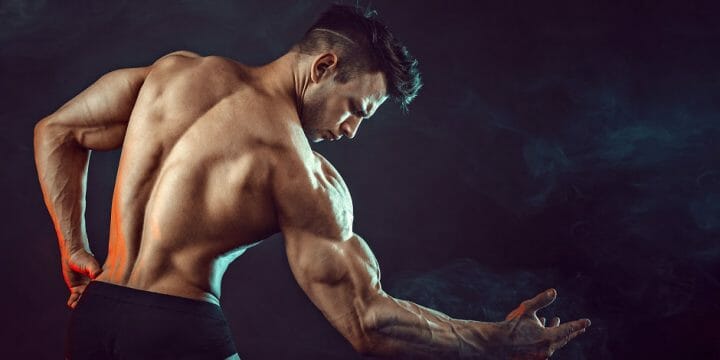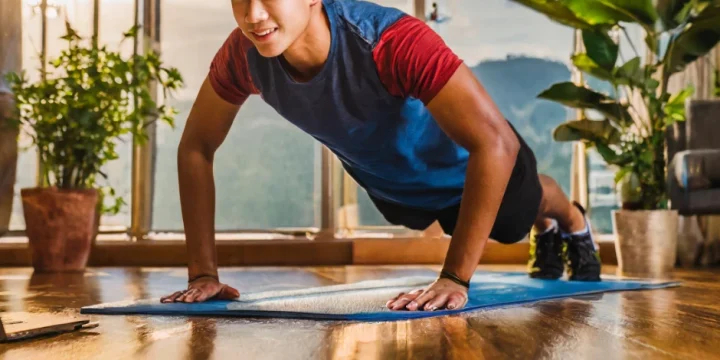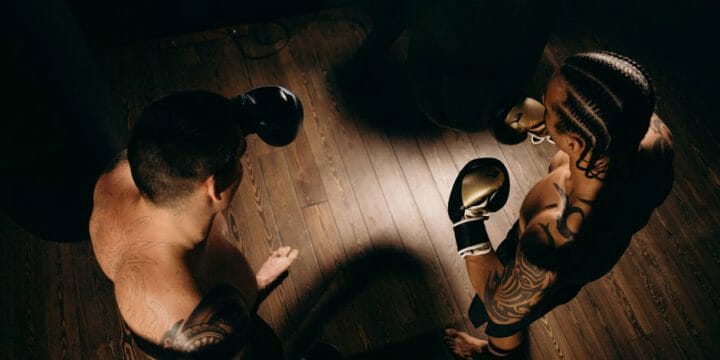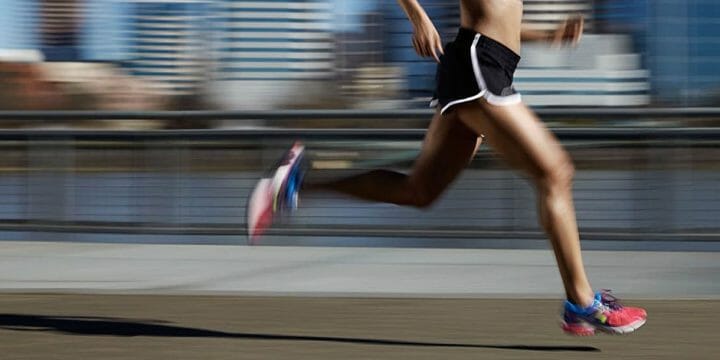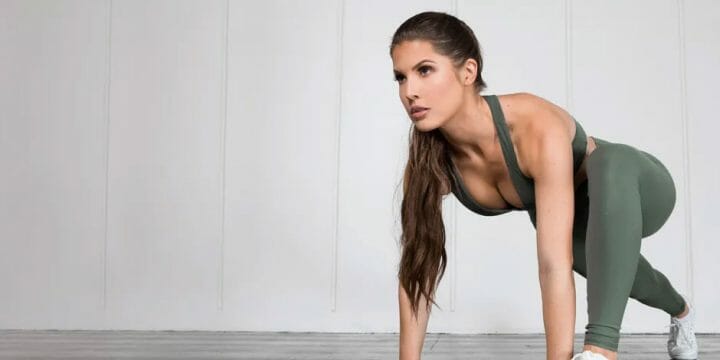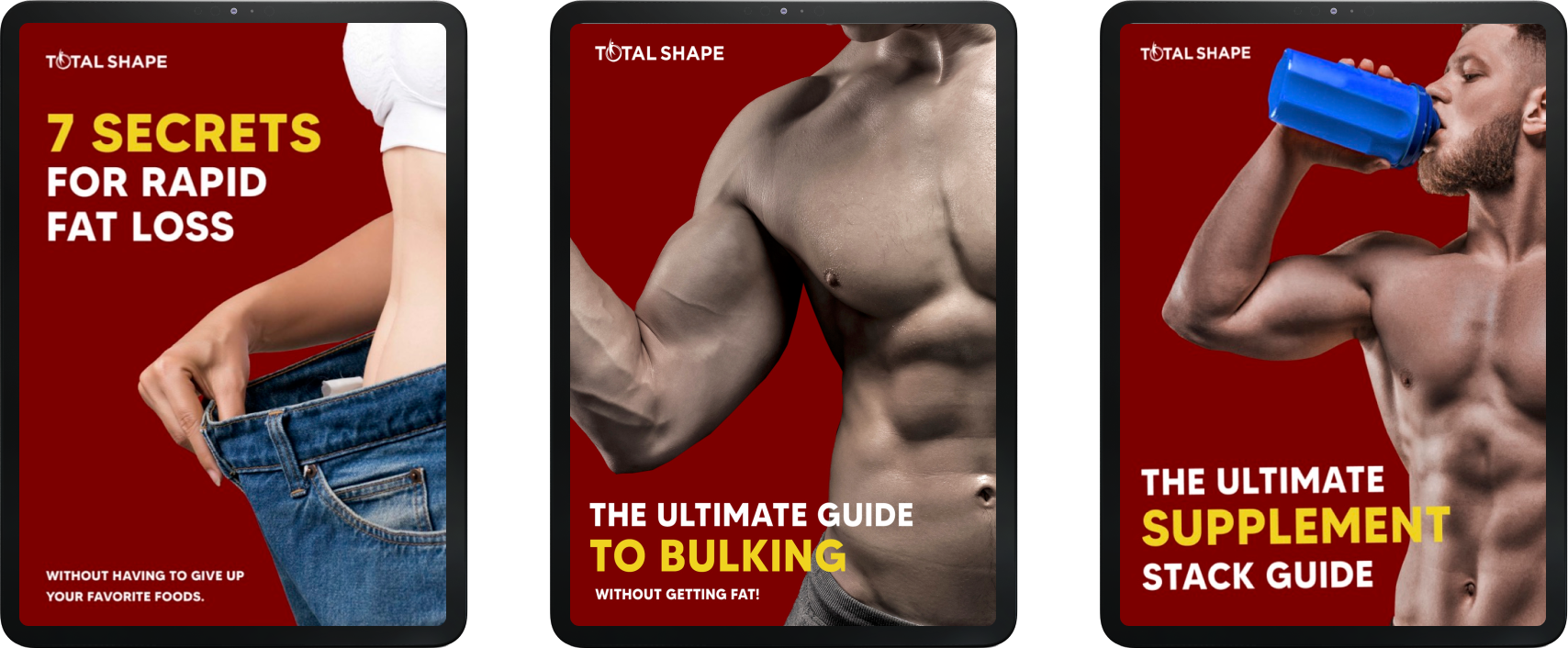The Greek god physique is among the most desired body types in the world. Both superstars and regular people seek to acquire this look.
What's the best way to build such a physique? And what workout makes you acquire the Greek god physique?
As a fitness trainer, I went through a vast amount of research to know the Greek gods, their description in terms of physique, and the best workouts you can perform to achieve that Greek god physique.
In this article, I will provide my findings on a Greek god physique workout program, exercises you can perform, and the diet and supplements to build a Greek god's body.
Quick Summary
- You must perform key workouts such as squats, deadlifts, bench presses, and overhead presses to obtain the Greek god's appearance. These workouts will assist you in gaining muscle mass in all the right regions.
- A Greek god's physique is lean, balanced, and athletic, with well-defined arms and shoulders, lean legs, abs, and a broad chest and back.
- The National Institutes of Health recommends 1.6g of protein per kilogram of body weight and more when dieting.
- Based on my professional journey, I've found that this comprehensive strategy is essential for anyone aspiring to the Greek god physique.
Greek God Physique Workout Plan

The Greek god physique, known for its lean, powerful, and harmonious balance, holds significant historical and cultural roots.
Stemming from ancient Greek art and mythology, it represents a blend of strength, symmetry, and aesthetic unity, ensuring no single muscle group dominates.
In my experience as a health and performance coach, the following training routine, while challenging, effectively cultivates this revered physique, embodying the dedication required to achieve such a form.
“Achieving a perfect Greek god body demands dedication, perseverance, and consistency. You may get your perfect Greek god physique by following suitable training and diet routines, plus supplementation and changes in lifestyle.”
- Robert Carter, Certified Personal Trainer & Sports Writer
Workout Program A
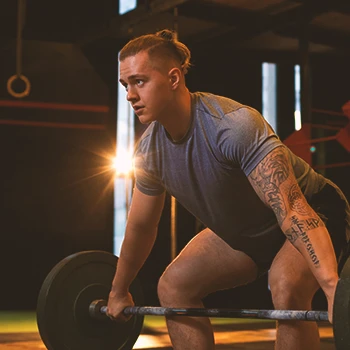
Workout 1:
- 3 sets of 6 repetitions of the conventional deadlift
- 3 sets of 10 repetitions of the leg press
- 3 sets of 8 repetitions of the incline bench press
- 3 sets of 10 repetitions of the dumbbell shoulder press
- 3 sets of 10 repetitions of EZ bar curls
Workout 2:
- 3 sets of 8 repetitions of neutral grip pull-ups
- 3 sets of 10 repetitions of weighted dips
- 4 sets of 8 repetitions of barbell squats
- 3 sets of 12 repetitions of hamstring curls
- 4 sets of 15 repetitions of calf raise
Workout Program B
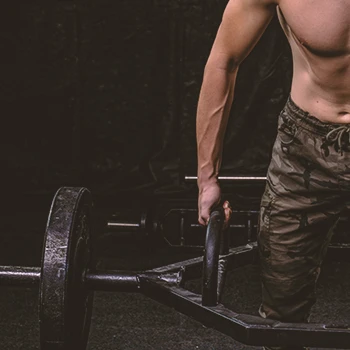
Workout 1:
- 3 sets of 8 repetitions of the trap bar deadlift
- 4 sets of 10 repetitions of Incline dumbbell press
- 4 sets of 12 repetitions of lateral raises
- 3 sets of 10 repetitions of EZ bar curls
- 4 sets of 12 repetitions of the overhead triceps extension
Workout 2:
- 3 sets of 8 repetitions of barbell squats
- 3 sets of 10 repetitions of neutral grip pull-ups
- 3 sets of 8 repetitions of military press
- 4 sets of 15 repetitions of calf raise
- 4 sets of 15 repetitions of leg raise
Workout 3:
- 4 sets of 8 repetitions of bench press
- 3 sets of 10 repetitions of one arm dumbbell row
- 3 sets of 12 repetitions of reverse fly
- 3 sets of 20 repetitions of dumbbell lunges
Workout Program C
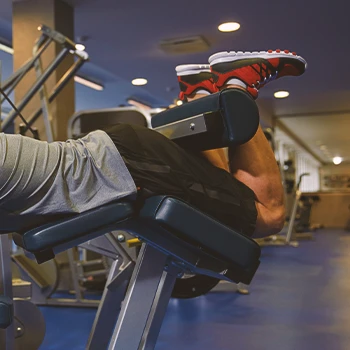
Workout 1:
- 3 sets of 8 repetitions of stiff leg deadlift
- 3 sets of 12 repetitions of hamstring curls
- 3 sets of 10 repetitions of the upper back row
- 3 sets of 12 repetitions of cross cable reverse flyes
- 4 sets of 10 repetitions of cross-cable triceps extension
Workout 2:
- 3 sets of 8 repetitions of dumbbell chest press
- 3 sets of 12 repetitions of decline cable chest press (lower pecs).
- 4 sets of 10 repetitions of dumbbell lateral raise
- 3 sets of 12 repetitions of EZ bar curls
- 4 sets of 15 repetitions of the calf machine
Workout 3:
- 4 sets of 8 repetitions of dumbbell military press
- 3 sets of 8 repetitions of T-bar chest supported row
- 3 sets of 12 repetitions of cable lat push down
- 4 sets of 15 repetitions of leg raise
Workout 4:
- 3 sets of 8 repetitions of the barbell squat
- 3 sets of 8 repetitions of hip thrust
- 3 sets of 12 repetitions of leg extensions
- 3 sets of 15 repetitions on reverse hypers.
Exercises To Build a Greek god physique

Exercises for pure Greek god body strength and power:
- Single dumbbell snatch
- Push press
- Back squat
- Conventional deadlift
- Farmer carry
- Hip thrust
- Sled work
Exercises for Greek god legs:
- Deficit deadlift
- Front squat
- Dumbbell stiff-leg deadlift
- Split squat
- Leg extension
- Dumbbell Romanian deadlift
- Leg curls
Exercises for a Greek god chest:
- Incline bench press (dumbbell)
- Barbell bench press
- Weighted push-up
- Dips
- Cable chest flyes
Exercises for a Greek god back:
- Pull-ups
- Weighted chin-ups
- Seated rows
- Bent-over rows
- Face pulls
- Kroc rows
Exercises for Greek god shoulders:
- Upright rows
- Seated military press
- Reverse cable flyes
- Lateral raises
- Front straight-arm push-downs
Exercises for Greek god arms:
- Overhead rope triceps extensions
- EZ bar preacher curls
- Triceps press downs
- Reverse barbell curls
- Bicep 21's
Incorporating sustainable practices in these exercises, such as focusing on form and gradual progression, ensures long-term health and fitness, preventing injuries and promoting longevity in bodybuilding.
Characteristics of a Greek God Physique

The following features define the Greek god body:
- A Great Shoulders to Waist Ratio: Broad shoulders and a small waist are essential to the Greek god physique.
- Built Upper Body Musculature: In addition to strengthening the muscles in your shoulders and back, you should focus on your forearms, biceps, chest, and triceps. This will make your body look more prominent and proportionate.
- Low Body Fat Percentage: Being sufficiently lean to make your muscle groups look prominent and defined is essential. Because muscle adds structure to your physique, you may look nice with 15% body fat but strive for 10% to 12% to look your best.
- Muscular Legs: A set of well-developed legs helps you achieve the X-shape: big shoulders, a small waist, and a built lower body.
- Symmetry: The final component of the puzzle is attaining proper balance and not allowing the same muscle group to dominate. Symmetry necessitates a balanced training method and accurate progress tracking.
Greek God Physique Measurements and Proportion

Fortunately, you may follow certain basic principles to establish what measures you should strive for to develop a Greek god physique.
Sandow's Grecian Ideal
Achieving a Greek god physique starts with a V-taper back but involves much more.
Genetics significantly impact muscle growth, fat distribution, and body shape, underscoring the need for realistic, tailored fitness goals.
In my coaching experience, substantial muscle development in the arms, shoulders, legs, and back, coupled with a lean waist, is crucial.
Eugen Sandow, the forefather of modern bodybuilding, created the Grecian Ideal, a guide to ideal body proportions based on mathematical ratios from classical sculptures.
This method, which I've successfully applied with clients, involves calculating specific measurements for each muscle group in a flexed state, following Sandow's pattern of symmetry and proportion:
- Upper arms - 2.5 times the diameter of the wrist
- Shoulders - 1.618 times the waist circumference (the golden ratio)
- Chest - 6.5 times the wrist circumference
- Thighs - 1.75 times the knee circumference
- Calves - equivalent to upper arm circumference
The Golden Ratio

It all starts with the golden ratio, which bodybuilders use to describe a person's aesthetics according to their waist and shoulder proportions.
The 1:1.618 is the ideal shoulder-to-waist ratio.
Multiply the measurement of your waist by 1.618 to get your ideal measurements.
For example, if you have a generally bigger waist, you must work extra hard on the upper body to attain the golden ratio.
“Today's bodybuilding is about possessing a zero waistline and veins across the body, while the golden ratio is about creating substantial legs and getting as muscular as possible.”
- Ishaan Arora, Certified Strength & Conditioning Specialist
Greek Gods Diet Program

The Greek god physique largely hinges on diet. Muscles need proper nutrition to grow.
As a health and performance coach, I've seen that avoiding processed foods and limiting cheat meals is crucial for achieving this physique.
Embracing the 80/20 rule, where 80% of your diet comprises whole, natural foods, is effective. Start by calculating your Basal Metabolic Rate (BMR), which is essential for understanding your basic caloric needs.
Among various methods, the Mifflin-St Jeor formula is the most reliable and accurate, a tool I frequently use with clients to tailor their nutritional plans.
The equations are as follows:
Men (both Imperial and Metric):
- BMR = (4.536 times your weight in pounds) + (15.88 times your height in inches) - (5 times your age) + 5
- BMR = (10 times your weight in kilograms) + (6.25 times your height in centimeters) - (5 times your age) + 5
Women (both Imperial and Metric):
- BMR = (4.536 times your weight in pounds) + (15.88 times your height in inches) - (5 × your age) - 161
- BMR = (10 times your weight in kilograms) + (6.25 times your height centimeters) - (5 times your age) - 161
Account for your exercise level when calculating calorie needs. Training intensely requires more calories, so multiply your BMR by 1.55. This figure is a starting point; adjust as necessary based on your body's response.
- For weight maintenance, use this multiplier directly.
- To shed fat, reduce your intake by 300-500 calories, balancing fat loss with muscle preservation.
- Conversely, for muscle gain, increase your intake by 300-500 calories daily.
In my coaching experience, gradual adjustments are key to avoiding excessive muscle loss or fat gain.
Always tailor your approach to your specific body goals and monitor progress.
The Macros

Protein
Protein will be your primary focus when it comes to macro counts. This is in charge of muscle growth, so you'll need lots of it.
Aim for 1.8-2.2g of protein per kilogram of body weight. You can eat on the lower end if you are gaining weight.
If you're cutting, you'll want to consume the upper end because the extra amino acids can retain muscle and stimulate healthy body composition as shown by studies in the National Library of Medicine [1].
Fats and Carbohydrates
Fat consumption should account for at least 20% of total calorie intake but should start at 30%. The rest will be made up of carbohydrates.
You may change the carbs and fats if necessary, as long as you don't dip below 20% fat.
Also, while deficient carb diets may be beneficial for reducing or maintaining weight, studies published by the National Institutes of Health show that they are ineffective for muscle growth [2].
Supplements for a Greek God Physique Workouts

Supplements may be beneficial in meeting your nutritional requirements, particularly while exercising hard and reducing calories for the Greek god physique.
The supplements listed below can help you and have been proven to benefit lifters substantially.
1. Creatine
2021 research from the National Institutes of Health shows that creatine boosts strength and power by providing rapid muscle energy [3].
During heavy lifting, muscles use creatine or ATP for contractions.
Increased creatine levels enhance muscle storage and hydration, improving blood flow and nutrient delivery.
In my coaching practice, I've observed significant performance improvements in clients who supplement with quality creatine.
2. Protein Powders
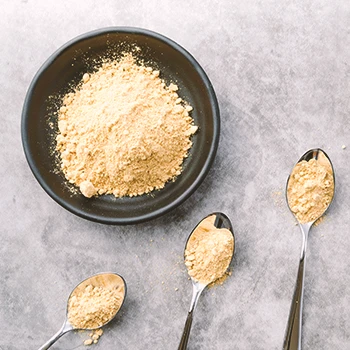
Protein powders are effective in meeting daily protein needs, especially during intense training for muscle gain and fat loss.
The National Institutes of Health recommends 1.6g of protein per kilogram of body weight, possibly more when dieting [4].
While whole foods like eggs, lean meats, and dairy are crucial, protein powders offer a convenient source of fast-absorbing protein.
Choose a powder primarily composed of protein, with minimal carbs and fats, containing at least 25-30g of protein and 120-170 calories per serving.
In my experience, clients who supplement their diet with such protein powders often see improved muscle development and recovery.
3. Caffeine or Pre-Workout Supplements
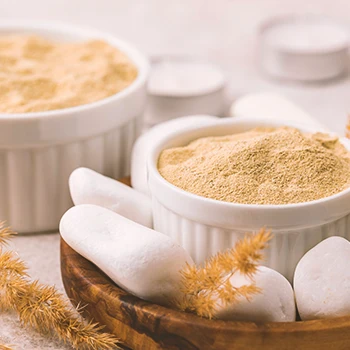
Research from the Journal of the International Society of Sports Nutrition indicates that caffeine and pre-workout supplements boost energy, focus, and endurance for intense exercise [5].
Caffeine, a major component in most pre-workouts, can provide a necessary energy lift.
However, it's important to use them judiciously to avoid disrupting sleep patterns or compensating for poor rest.
A dose of 150-300g of caffeine about 30-40 minutes before a workout can enhance performance, but excessive intake may lead to jitteriness or increased heart rate.
In my coaching experience, carefully calibrated caffeine use has significantly improved clients' workout intensity and concentration.
Related Articles:
4. Beta-Alanine
While beta-alanine causes you to feel tingling, its performance advantages are not acute.
According to the National Library of Medicine, beta-alanine works by boosting carnosine synthesis, which buffers acidic build-up in the muscle groups and allows you to push harder and for longer periods [6].
While studies indicate that good beta-alanine is effective, it will take around a month to experience its results.
FAQs
How Long Does It Take To Get a Greek God Physique?
It could take ten to twelve months to develop a Greek god physique. If your diet and exercise are to absolute perfection in pursuing the Greek god physique, you can achieve it in a few months.
Which Greek God Is for Muscle?
The Greek god for muscle is Hercules. He was Zeus's son and the ruler of all gods. He was also known for his extraordinary strength and muscular physique.
Who Is the Strongest Physical Greek God?
The strongest physical god is Zeus. In Greek mythology, Zeus is considered the most powerful god because he possesses strength and wisdom.
Supplementing the Greek God Workout Routine
So, now that you understand that to look like a Greek god, you must work hard on your physique growth, don't waste any more time, and begin working out.
Incorporate the workouts mentioned above into your routine, eat healthily, get enough rest, and use the best post-workout supplements for recovery after your workouts.
After putting them to the test, the supplements proved effective by offering a faster recovery for our next workout session.
References:
- https://pubmed.ncbi.nlm.nih.gov/24834017/
- https://www.ncbi.nlm.nih.gov/pmc/articles/PMC8878406/
- https://www.ncbi.nlm.nih.gov/pmc/articles/PMC8228369/
- https://www.ncbi.nlm.nih.gov/pmc/articles/PMC5852756/
- https://www.ncbi.nlm.nih.gov/pmc/articles/PMC4947244/
- https://www.ncbi.nlm.nih.gov/pmc/articles/PMC3257613/
About The Author
You May Also Like
